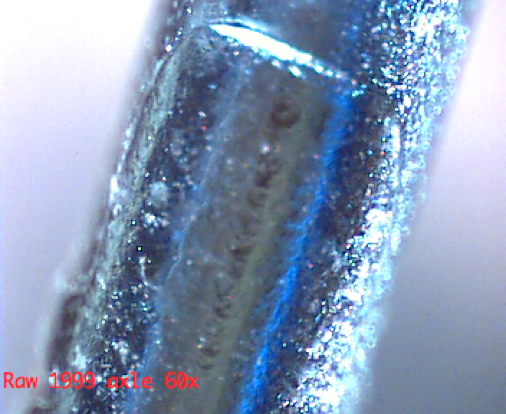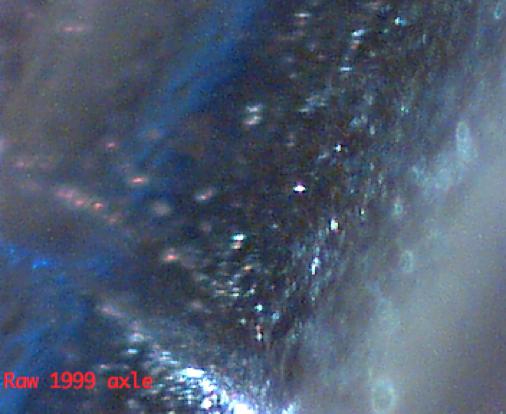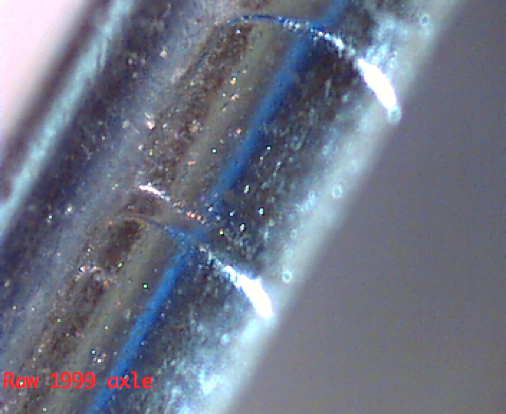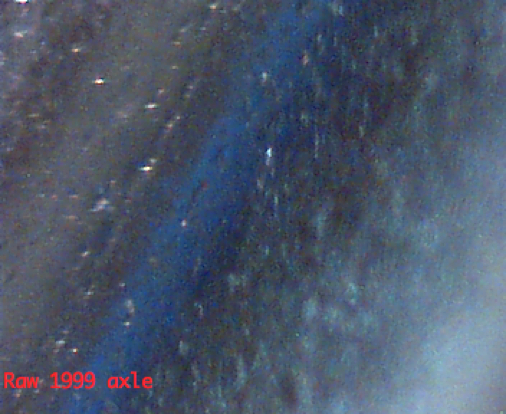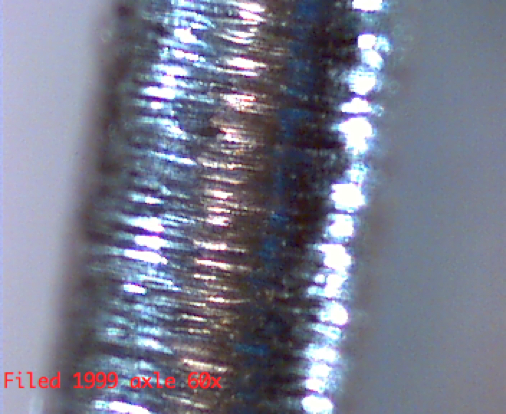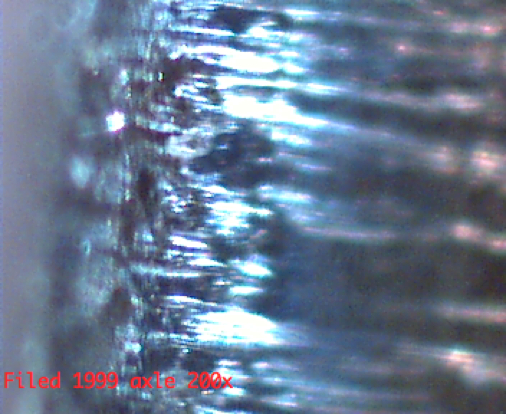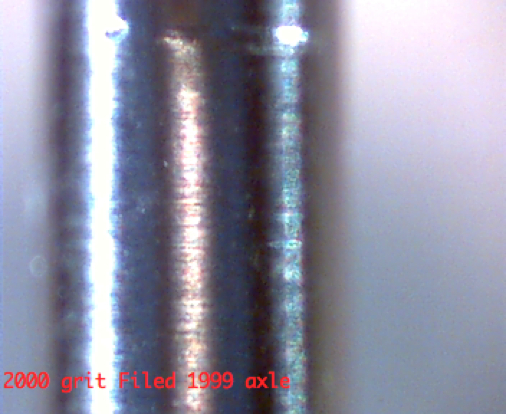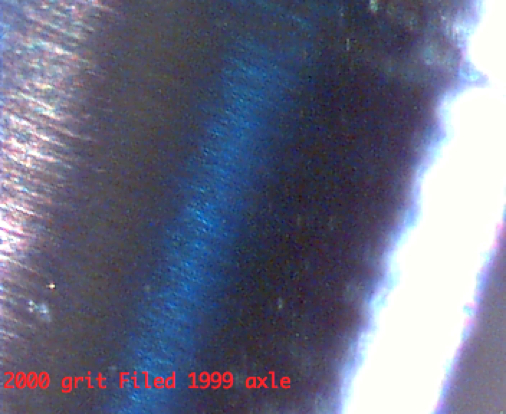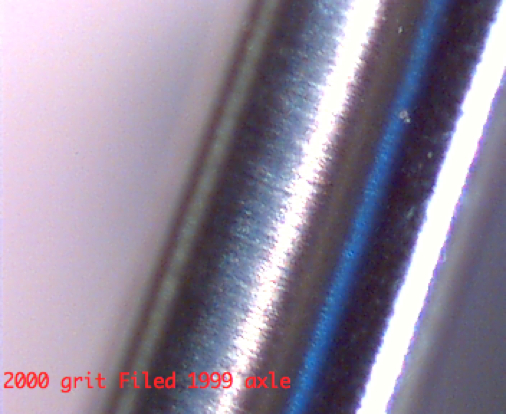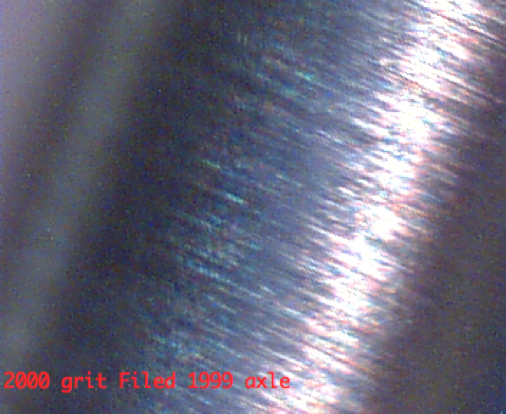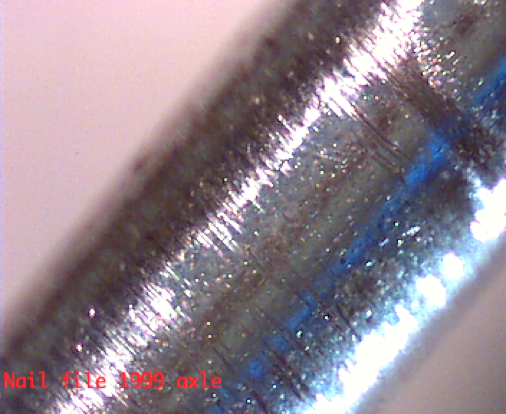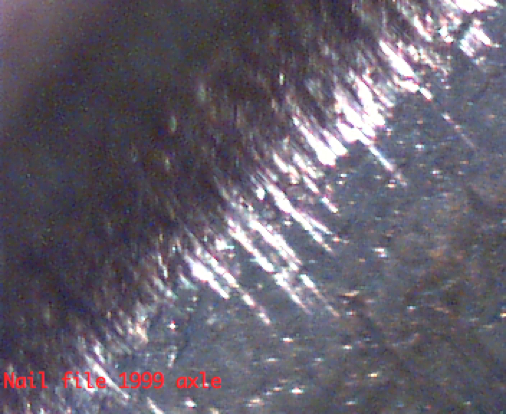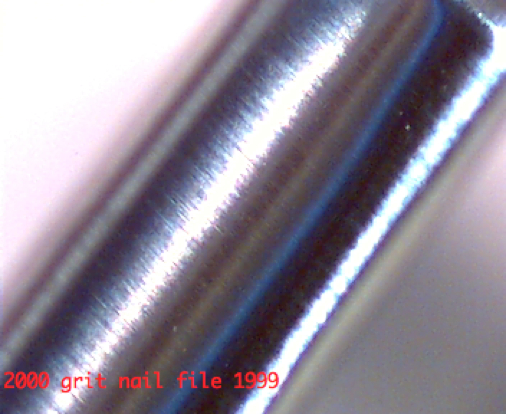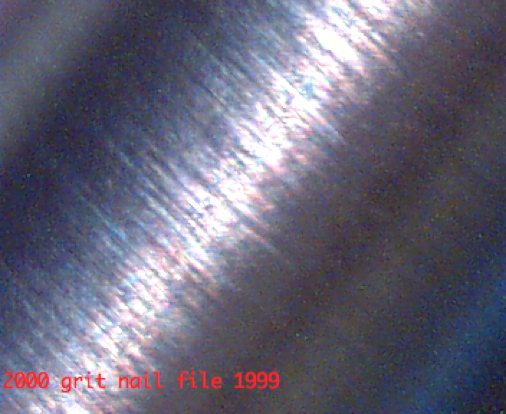Pinewood Derby Axle Preparation Study
This page contains some captured microscope images of pinewood derby
axles under different preparations.
The microscope is an Intel QX-3, and the images shown here are all
taken at either 60x (on the left) or 200x (on the right) magnification.
First, these images of a "raw" axle, as it comes out of the box.
File Plus Sanding
This axle was dressed with an ordinary metal file in order to remove
burrs and crimp marks; here is the result:
After filing, wet sanding at grits of 320, 400, P600, P800, 1000, 1500,
and 2000 was applied. After each grade of sanding, a cotton cloth
was used to clean the slurry from the axle. When this process was
completed, the resulting axle looked like this. (Images after
each sanding step are available here.)
Nail File Plus Sanding
This axle was dressed with a La Crosse "sapphire nail file," rather
than an ordinary metal file. The relatively fine abrasives
yielded a slightly cleaner result:
Once again, wet sanding at grits of 400, P600, P800, 1000, 1500,
and 2000 was applied. (After examining the results from the file,
320 grit was deemed too coarse to bother with.) After each grade
of sanding, a cotton cloth
was used to clean the slurry from the axle. The result, shown
here, is virtually identical to the result of using a file.
(Images after
each sanding step are available here.)
Lapping Film
Some follow-up experiments using 3M lapping film here.
Other Axle Treatments
We've mostly used sandpaper for axle polishing, but other materials are
possible. Results of using pumice and jeweler's rouge on a used
axle are shown here.
